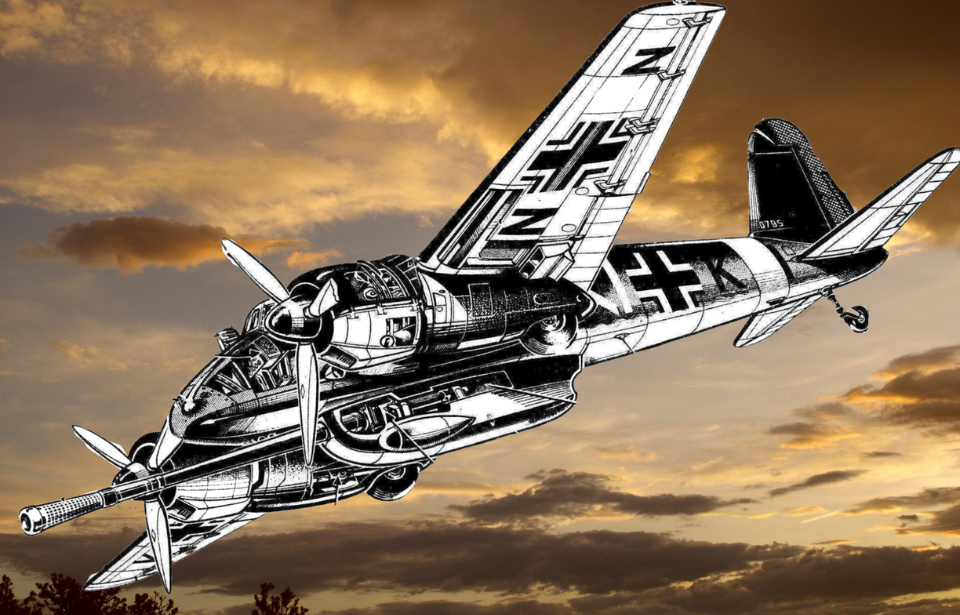
As tank warfare evolved and became a key strategy during the interwar period, the German Wehrmacht envisioned a new kind of blitzkrieg – one that would rain down from the skies. Spurred on by the Condor Legion’s success in the Spanish Civil War, the idea gave rise to the Henschel Hs 129, an aircraft designed to be Germany’s ultimate Panzerknacker.
The Hs 129 was intended to be a tank-hunting, close-support aircraft. Despite being flown by record-breaking aces, including Rudolf-Heinz Ruffer, who destroyed 80 tanks, the Hs 129 didn’t quite live up to its potential, struggling to make a significant impact during World War II.
Developing the Henschel Hs 129
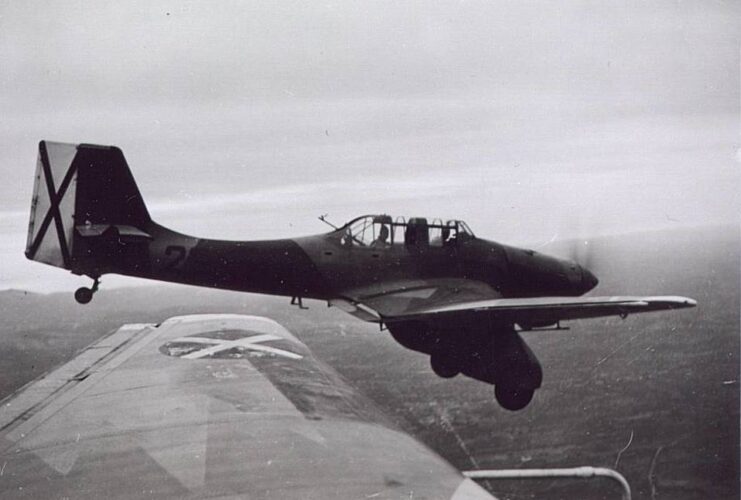
Junkers Ju 87A with Condor Legion markings. (Photo Credit: Unknown Author / Biblioteca Virtual de Defensa: Guerra Civil. Tomo III / Wikimedia Commons CC0 1.0)
The Henschel Hs 129’s hurried introduction to the battlefield was plagued by problematic design choices and requirements. Its development was slow, production was filled with complications and it was never manufactured in sufficient enough numbers to decisively influence the war.
Under the Fuhrer‘s vision of swiftly and decisively advancing through Europe, the Reichsluftfahrtministerium (RLM) issued a specification in April 1937 for a heavily-armored small aircraft equipped with multiple guns. This required specialized engines and 75 mm-thick armored glass for the cockpit, to protect against small arms fire from the enemy.
This decision limited the project’s effectiveness. The RLM insisted on equipping engines not used in any other aircraft, to avoid interfering with the fleet’s production. Out of four companies, only Focke-Wulf and Henschel were considered, with the latter ultimately winning the contract.
It wasn’t the best option, but it was the cheapest

Henschel Hs 129, with its wings removed, being towed by an Opel Blitz, 1939. (Photo Credit: tormentor4555 / Wikimedia Commons / Public Domain)
The first prototype of the Henschel Hs 129 took to the skies on May 26, 1939. Despite several modifications and surviving a crash landing, the aircraft was underwhelming with its low power and poor visibility. However, it was significantly cheaper than Focke-Wulf’s design, prompting the RLM to continue with the project.
Production and deployment of the Hs 129 were marred by design complications and ill-advised decisions from the Luftwaffe‘s high command. They’d underestimated the need for a tank-busting aircraft. During Operation Barbarossa, German intelligence grossly miscalculated the number of Soviet tanks. The Red Army had over twice the estimated 10,000 at the ready.
Although effective against Soviet tanks, the Hs 129 was seldom deployed with enough firepower or in large enough quantities. When fully loaded, it could only achieve a top speed of just over 250 MPH, making it an easy target for enemy anti-aircraft guns. As well, the aircraft’s captured Gnome-Rhône 14M engines were susceptible to failure from dust and sand, hampering its effectiveness in desert conditions.
Despite its flaws, the Henschel Hs 129 was admired by pilots
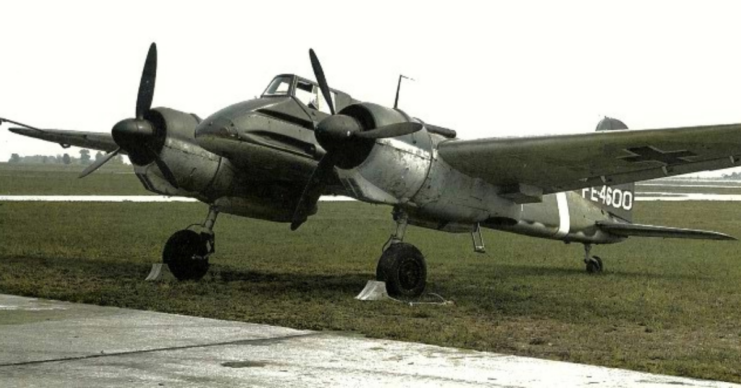
Henschel Hs 129. (Photo Credit: USAAF / Maury Markowitz / Wikimedia Commons / Public Domain / Colorized by Palette.fm)
By July 1943, with the fall of Tunis and subsequent withdrawal of German forces from North Africa, the Henschel Hs 129’s deployment in the region ended. Production constraints also meant the aircraft was never available in sufficient numbers to significantly impact any major campaign.
The Hs 129 was transferred to the Eastern Front, where it was expected to excel as a tank buster. There, it faced new challenges, with the Soviets’ aforementioned abundance of tanks and anti-aircraft guns posing a serious threat to the low-flying aircraft. Despite these obstacles, it performed well in its designated role.
The Hs 129’s potential was stymied by its inherent flaws and deployment circumstances. Even so, it was admired by many pilots. The aircraft, nicknamed the “German Warthog,” was commended for its near-indestructibility, thanks to its heavy armor and bulletproof glass. However, this safety feature also proved to be a performance hindrance. The Hs 129 struggled to ascend after a dive, had a slow climb rate and required an extended runway for takeoff.
Henschel Hs 129 variants
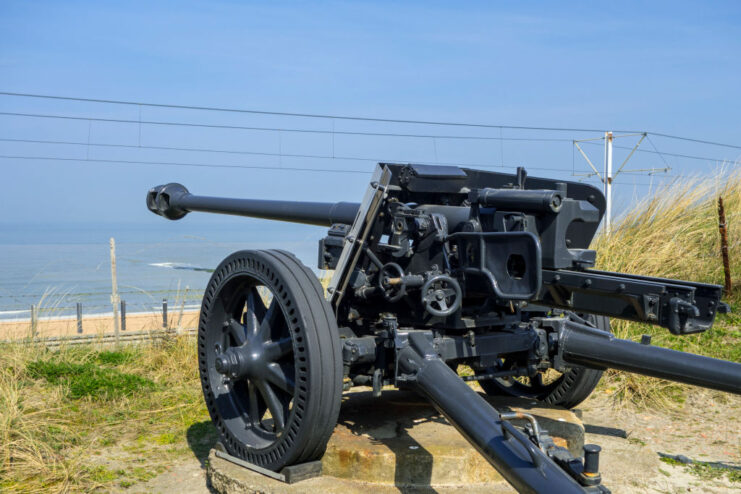
7,5 cm Panzerabwehrkanone 40 at the Atlantic Wall Open Air Museum, Belgium. (Photo Credit: ARTERRA / Universal Images Group / Getty Images)
The Henschel Hs 129 underwent several iterations, each presenting unique features and challenges. The B-1, equipped with a MK 101 cannon, provided an effective tank-busting capability. However, it was the B-2 that became the most well-known. Despite its enhancements, it struggled to overcome the aircraft’s inherent performance and visibility issues. The only difference between the two was modifications to the fuel system.
The most ambitious variant was the B-3, which was equipped with a 7,5 cm Panzerabwehrkanone 40 anti-tank gun adapted from the Junkers Ju 88P-1. This led to the development of the BK 7,5, which was lighter than the PaK 40 and featured a new hydraulic recoil-dampening system and a more aerodynamic muzzle brake. An autoloader system was fitted within the rear half of the wing root area, with the gun and its recoil mechanism housed in a substantial gun pod under the fuselage.
Despite the impressive firepower, the added weight impaired the Hs 129 B-3’s overall performance.
Lack of impact
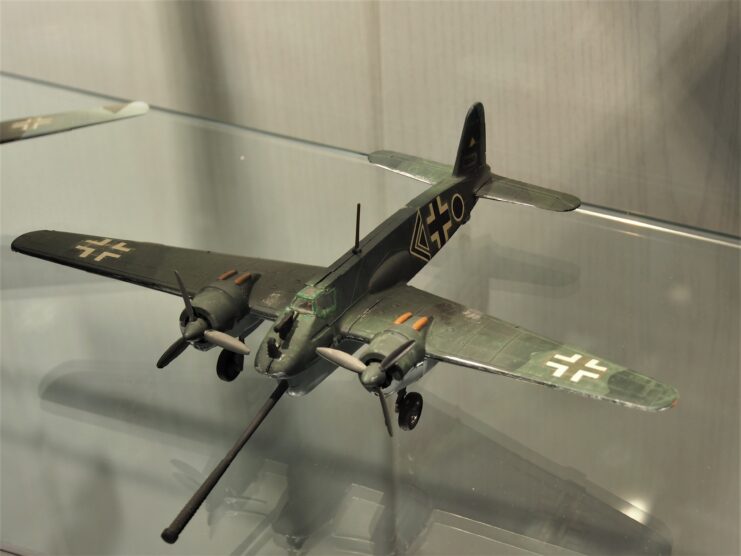
Henschel Hs 129 model on display at the Musée de la Bataille des Ardennes, Belgium. (Photo Credit: Alf van Beem / Wikimedia Commons / Public Domain)
By the end of the Second World War, only a handful of Henschel Hs 129 aircraft remained operational. The majority were lost to enemy fire, mechanical failures, or were abandoned due to a lack of spare parts and maintenance.
Despite its troubled history and missed opportunities, the Hs 129 remains a remarkable chapter in the history of World War II aviation. It symbolizes the trials and tribulations of German wartime aviation, and is an embodiment of remarkable ingenuity, adaptability and perseverance under the duress of war.
More from us: No. 1426 Flight RAF Flew German Aircraft Decked Out In Royal Air Force Insignia
While it might not have been the most successful aircraft of the conflict, the feats achieved by pilots and its unique role made the Hs 129 a notable combatant in the aerial theater of the war.





